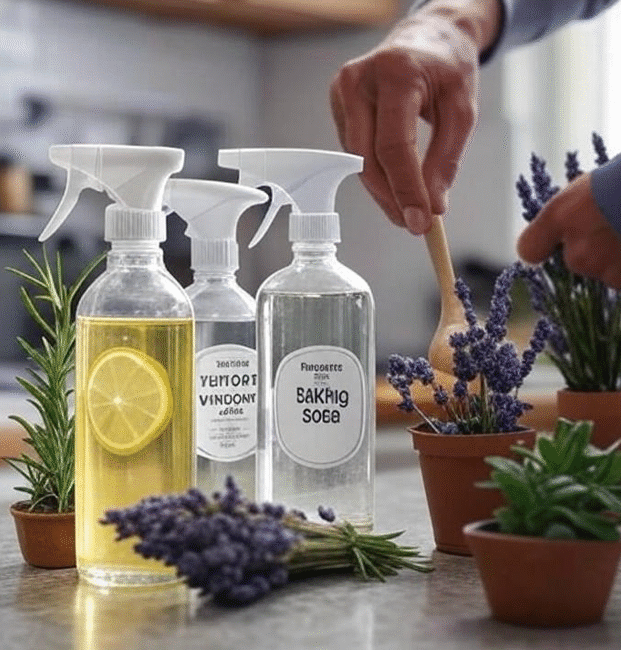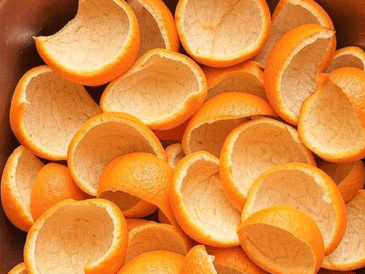In today’s world, where sustainability and health are becoming top priorities, many people are rethinking the products they use in their homes—especially cleaning supplies. Conventional cleaning products often contain harsh chemicals that can impact not only the environment but also your family’s health. Fortunately, you don’t have to compromise cleanliness for safety. DIY natural cleaning products are easy to make, cost-effective, and much gentler on your home and the planet.
In this article, we’ll explore the benefits of using natural cleaning products and share simple recipes you can make at home using common, eco-friendly ingredients.
Why Choose Natural Cleaning Products?
Traditional cleaners often include ingredients like ammonia, chlorine bleach, phthalates, and synthetic fragrances. These chemicals can cause skin irritation, respiratory problems, and contribute to indoor air pollution. Moreover, when rinsed down drains, they may harm aquatic life and disrupt ecosystems.
Switching to natural cleaning alternatives offers several benefits:
- Healthier indoor air: Natural cleaners reduce exposure to volatile organic compounds (VOCs).
- Safe for kids and pets: They minimize the risk of poisoning or allergic reactions.
- Environmentally friendly: Ingredients are biodegradable and less toxic to wildlife.
- Cost-effective: Many natural ingredients are inexpensive and multi-purpose.
- Customizable: You control the scent and strength.
Essential Ingredients for DIY Natural Cleaners
Before diving into recipes, here are some common, natural ingredients you’ll want to keep on hand:
- White vinegar: A powerful disinfectant and deodorizer that cuts grease and grime.
- Baking soda: Mild abrasive that helps remove stains and deodorize.
- Lemon juice: Natural antibacterial and adds a fresh scent.
- Castile soap: Vegetable-based soap that’s gentle but effective.
- Essential oils: Add fragrance and additional antibacterial properties (e.g., tea tree, lavender, eucalyptus).
- Hydrogen peroxide: A natural bleach alternative useful for disinfecting.
DIY Natural Cleaning Recipes
1. All-Purpose Cleaner
This easy all-purpose spray works on countertops, sinks, and bathroom surfaces.
Ingredients:
- 1 cup water
- 1 cup white vinegar
- 10 drops tea tree essential oil (optional)
- 10 drops lemon essential oil (optional)
Instructions:
- Combine all ingredients in a spray bottle.
- Shake well before each use.
- Spray on surfaces and wipe clean with a microfiber cloth.
Note: Avoid using vinegar on natural stone like granite or marble as it can etch the surface.
2. Baking Soda Scrub
Great for scrubbing tubs, sinks, and stovetops without scratching.
Ingredients:
- 1/2 cup baking soda
- 1/4 cup liquid castile soap
- 10 drops lavender essential oil (optional)
Instructions:
- Mix the baking soda and castile soap in a bowl until it forms a paste.
- Stir in the essential oil.
- Apply the paste to surfaces with a sponge or cloth and scrub gently.
- Rinse with water and dry.
3. Glass Cleaner
A streak-free window and mirror cleaner that’s safer than commercial options.
Ingredients:
- 1 cup water
- 1 cup rubbing alcohol (70% isopropyl)
- 1 tablespoon white vinegar
Instructions:
- Mix all ingredients in a spray bottle.
- Spray onto glass surfaces and wipe with a lint-free cloth or newspaper for a clear finish.
Tips for Using DIY Cleaners Safely and Effectively
- Label your bottles clearly: This avoids confusion and ensures safe use.
- Test first: Try a small spot on delicate surfaces before applying widely.
- Store properly: Keep homemade cleaners in a cool, dark place.
- Avoid mixing vinegar and baking soda directly: While they react well for cleaning, mixing them in a sealed container can cause pressure build-up.
- Use natural scrubbers: Pair cleaners with brushes, sponges, or microfiber cloths for best results.
Beyond Cleaning: Healthy Habits for a Safer Home
While natural cleaning products are a fantastic start, you can create a healthier home by adopting other eco-friendly habits:
- Ventilate regularly: Open windows to reduce indoor pollutants.
- Reduce clutter: Fewer items mean fewer places for dust and mold.
- Choose natural materials: Opt for wooden or bamboo kitchenware instead of plastics.
- Maintain humidity: Use a humidifier or dehumidifier to keep air balanced and prevent mold growth.
Final Thoughts
Making your own natural cleaning products is a rewarding way to take control of your household’s health and reduce your environmental impact. Plus, these DIY recipes save money and simplify your cleaning routine with ingredients you likely already have at home.
Start small with one or two products and enjoy the fresh, clean, and toxin-free atmosphere you create. Your home — and your loved ones — will thank you.




